- Biology, Botany 3-9+
- The materials, Parts of a Plant Cell puzzle, and the corresponding cards and charts Parts of a Plant Cell Nomenclature are complimentary to the study on cellular structure in an elementary classroom. Cellular structure determines in which group an organism belongs to.


- When studying biology, children learn about the Three Domains of Life. They discover a simple system to classify living organisms in 3 Domains: Bacteria, Archaea, and Eukarya. Bacteria and Archaea are said to have Prokaryotic cells; they are prokaryotes. Living organisms from the Eukarya domain are said to have Eukaryotic cells; they are Eukaryotes.
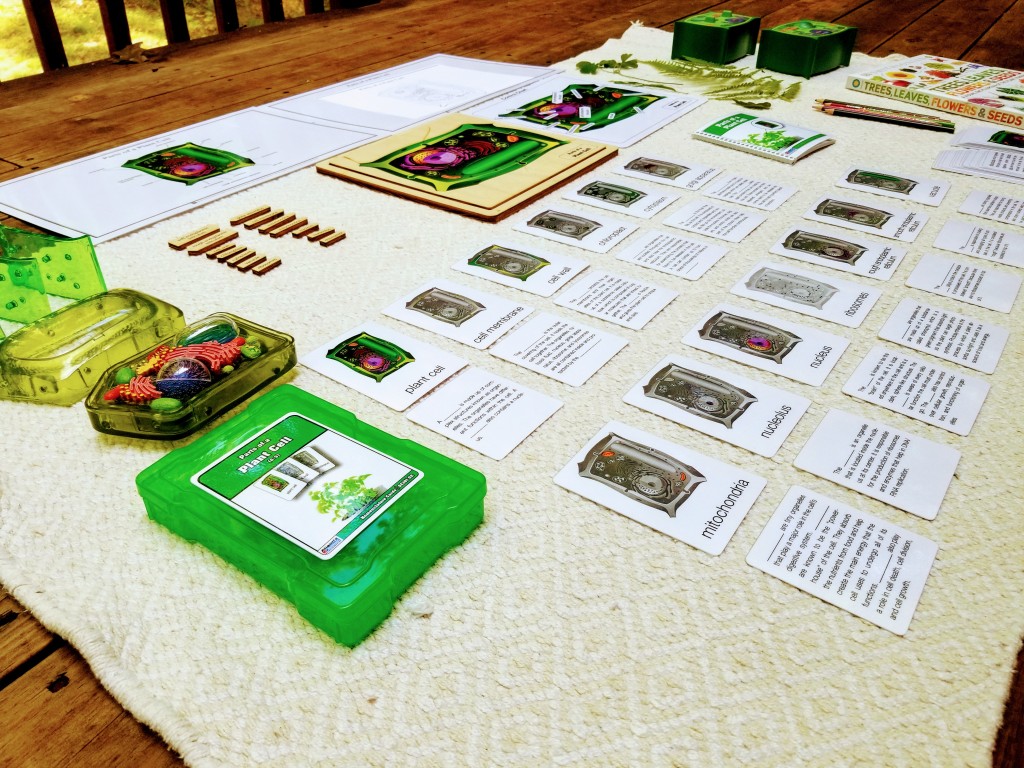
- One of the main criteria that dissociates Prokaryotes from Eukaryotes is their cell structure. Eukaryotes such as plants and animals have a membrane-bound nucleus (command center). The nucleus is clearly defined, and result in more complex multi-cellular organisms. On the contrary, Prokaryotes such as bacteria lack this complex distinctive nucleus. Instead, they are uni-cellular with a nucleoid that serves as command center and contains the DNA.
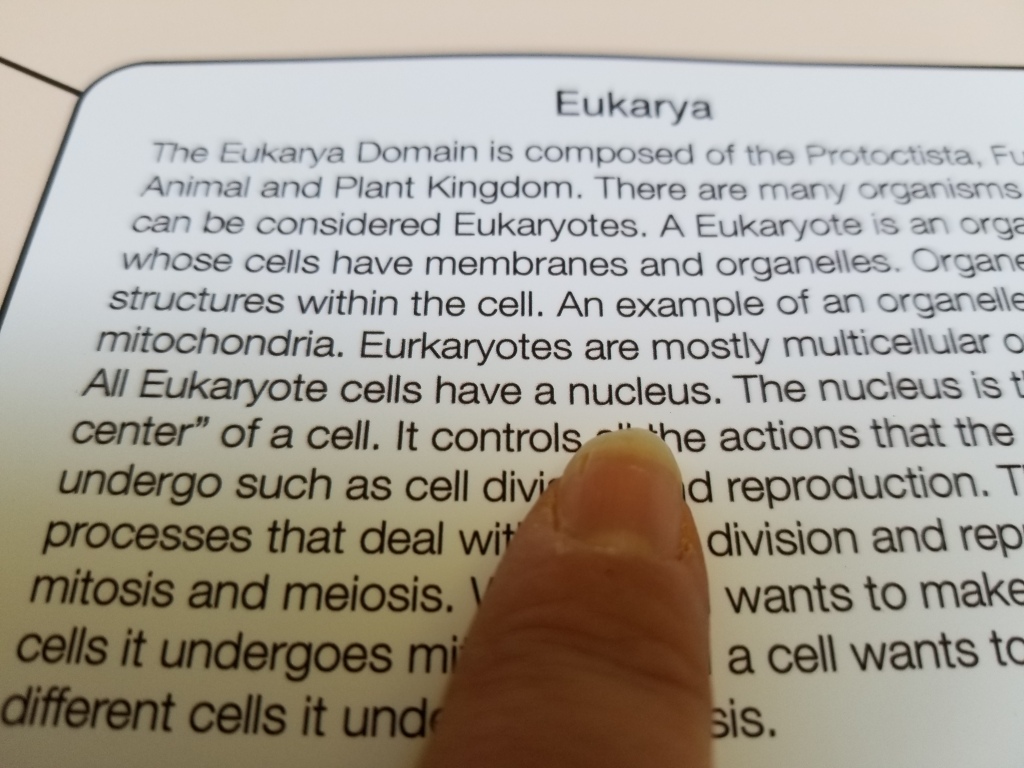
Materials

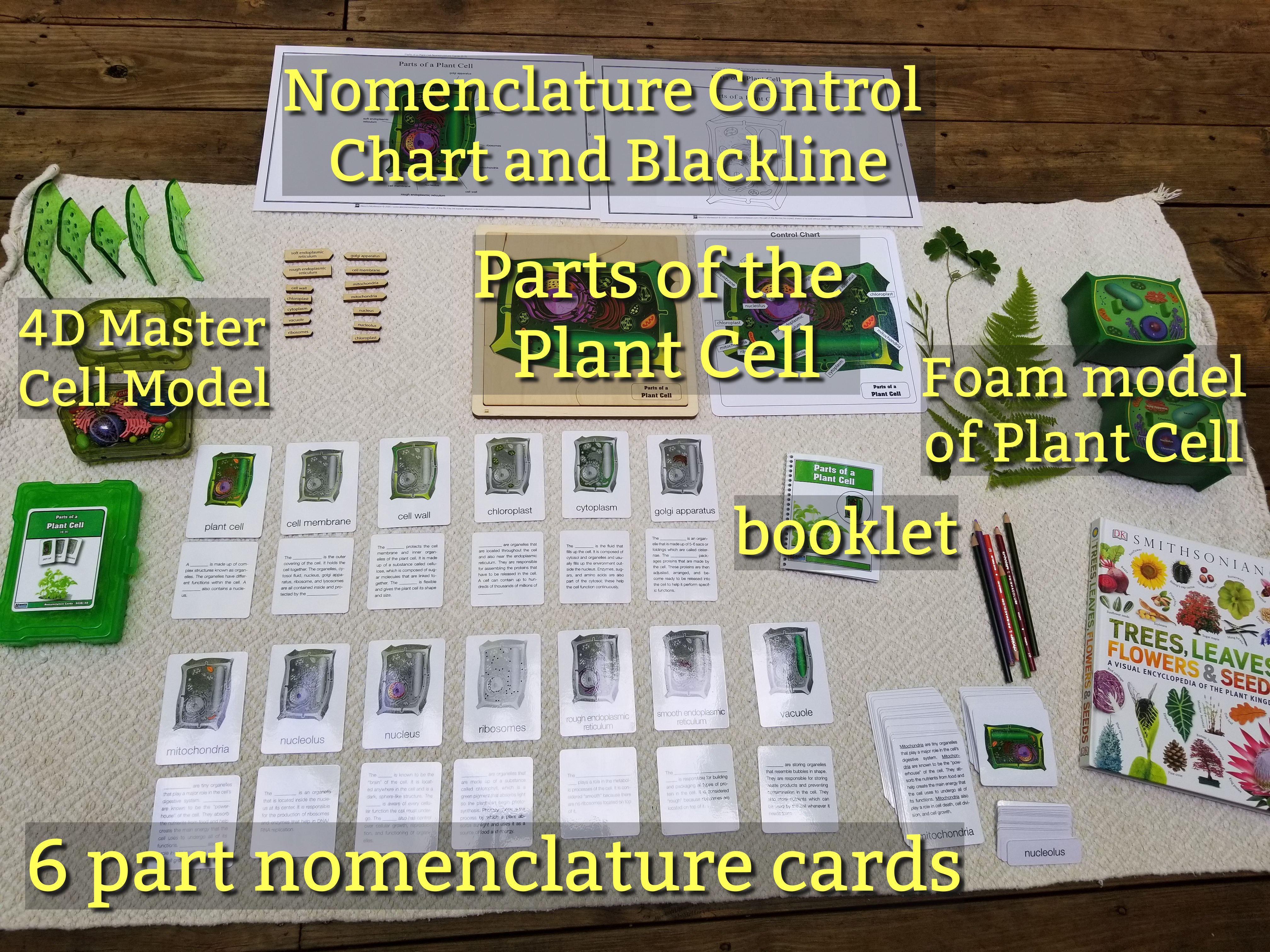
- One 10″ x 10″ wooden puzzle of The Parts of a Plant Cell
- One control chart for the puzzle
- Nomenclatures cards containing 18 labeled picture cards, 18 picture cards, 18 labels (x 2), 18 description cards, 18 description cards with blanks, 18 labeled description cards
- One Booklet for the nomenclature cards
- One large chart for the nomenclatures cards
- One large blackline diagram of the Plant Cell
- Optional: Foam Model of a Plant Cell
- Optional: 4D Master Model of a Plant Cell
How it works
- After revisiting the First and Second Great Stories, we have been studying Zoology through the Kingdom of Animals, and learned the functions of the internal parts of each phylum (Porifera, Cnidaria, etc…Birds, Reptiles, etc…).
- We revisited living vs. non-living organisms, the Three Domains, Animals vs. Plants, and read the Story of Plants.
- We are now approaching Botany, with an in-depth study of plants, the life cycle of different plants, and the Kingdom of Plants.
- Introducing the Parts of a Plant Cell puzzle fulfilled my 7 year old’s nascent interest, through a detailed and aesthetic approach. For my 9 year old, the puzzle accompanied by the nomenclature cards consolidated her knowledge, which is necessary for future lessons (Meiosis and Mitosis).
- We first matched the wooden arrows to the puzzle. We read together the booklet, which contains the description for each part of the plant cell.
- We placed all the labeled arrows in a linear manner, and matched the puzzle pieces.

- We took the 4D Master model apart, and compared it to the puzzle. It was really interesting to see a cell under different means.

4D Master Plant Cell
(aff. link)
Nucleus 2D vs 3D 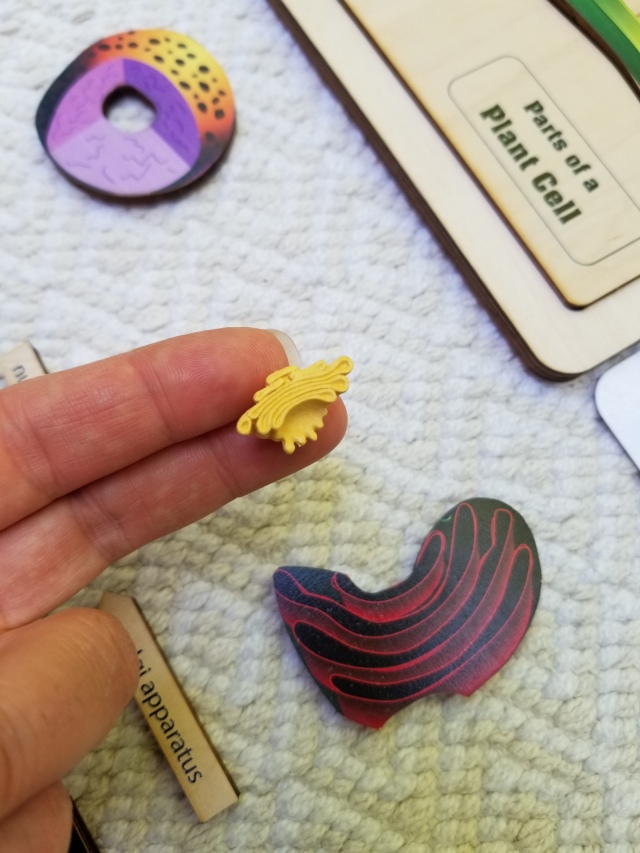
Golgi Apparatus 2D vs. 3D
- We colored and labeled the blackline diagram.

- We manipulated and explored a 3D Plant cell on http://www.visiblebody.com.

- Finally, we pulled out our microscope to look at the onion membrane. We finished by looking at various plants leaves we had collected prior to the lesson.
Disclosure: this experience was made possible thanks to Alison’s Montessori for having the confidence in their house-made products, and letting us try the puzzle at no cost, with no requirement on my part. I do write unbiased honest reviews, because I only write about products that work for us.

Nomenclature Cards – Parts of a Plant Cell 6-9 
Manual Botany Vol. 1 & 2 from Montessori RD contain the presentations
Ready for a lesson? Subscribe to receive notifications for the next on the Animal Cell. Check out this link for all Alison’s Montessori products related to this lesson. This lesson is available for primary level as well. Check out the Nomenclature cards 3-6.


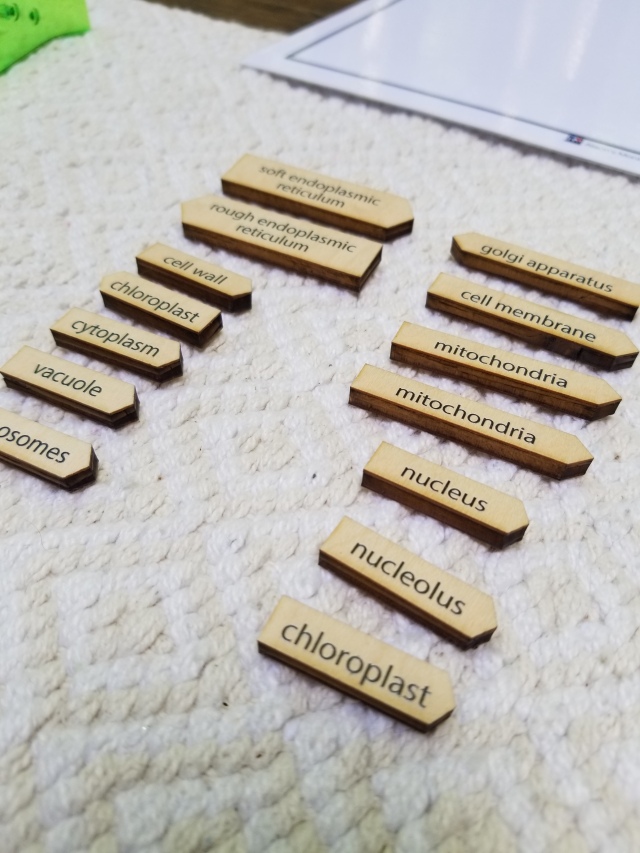



I find you posts inspiring and educational, thank you!
LikeLike
Dear Maggie, thank you for sharing your appreciation, it means a lot!
LikeLike